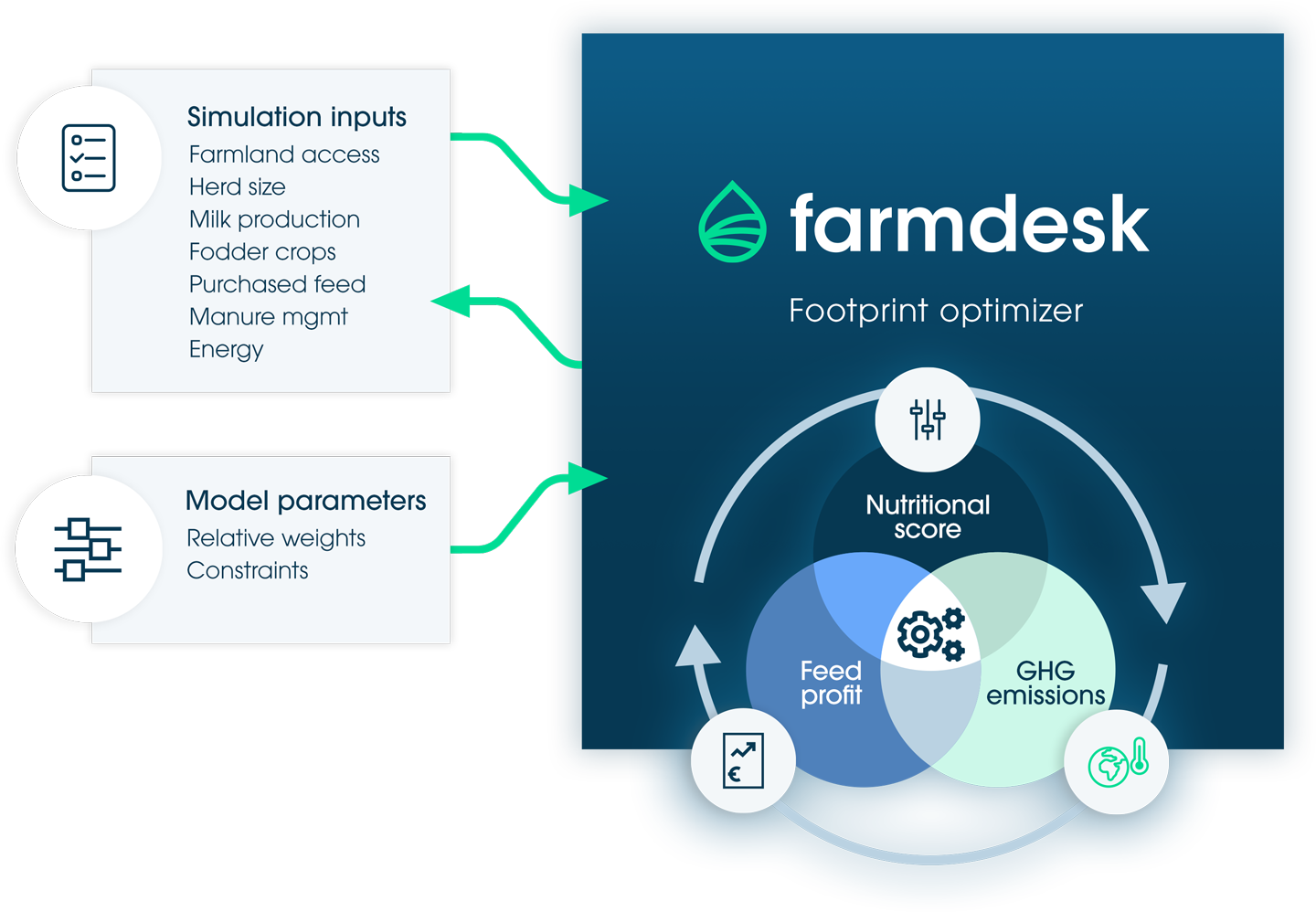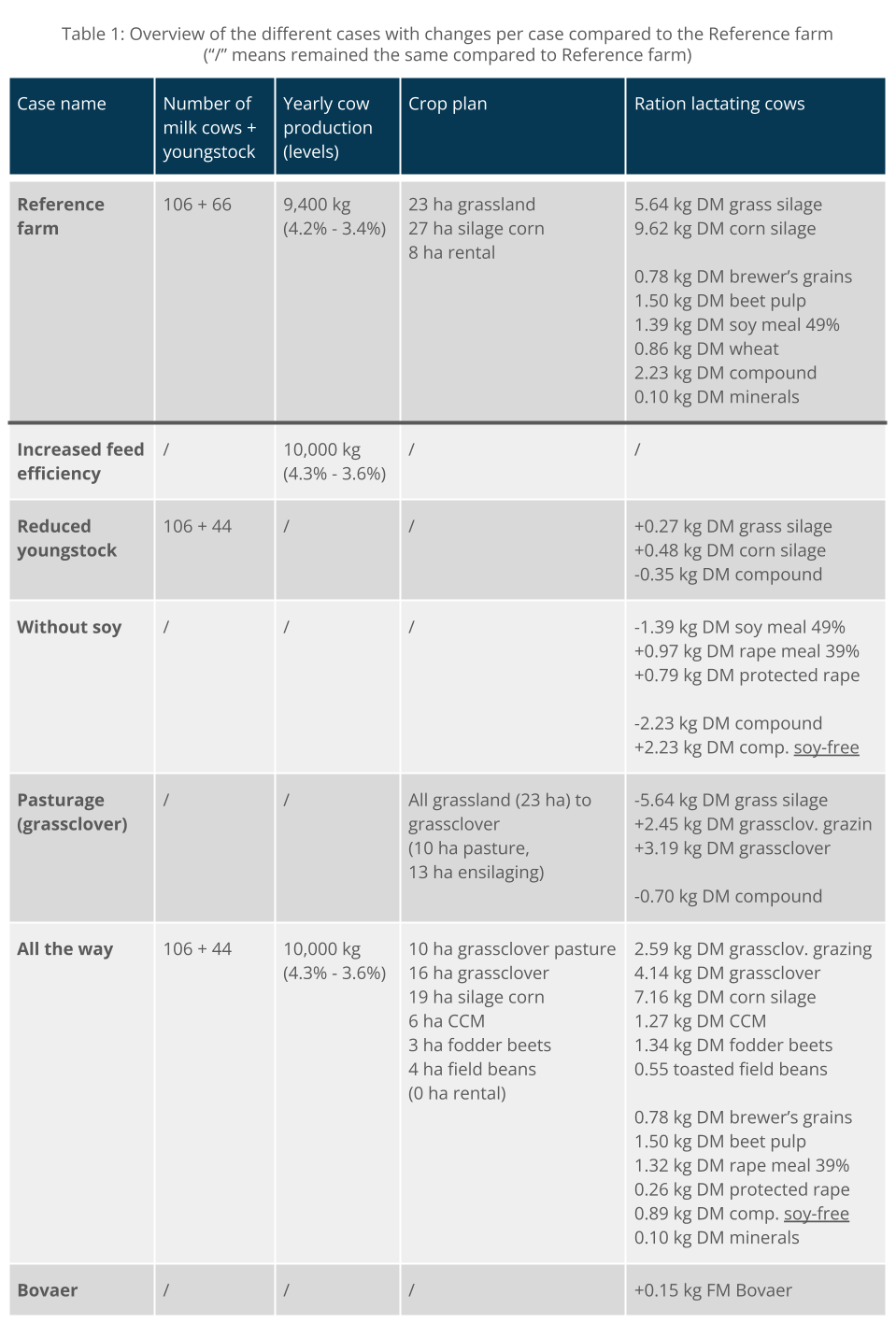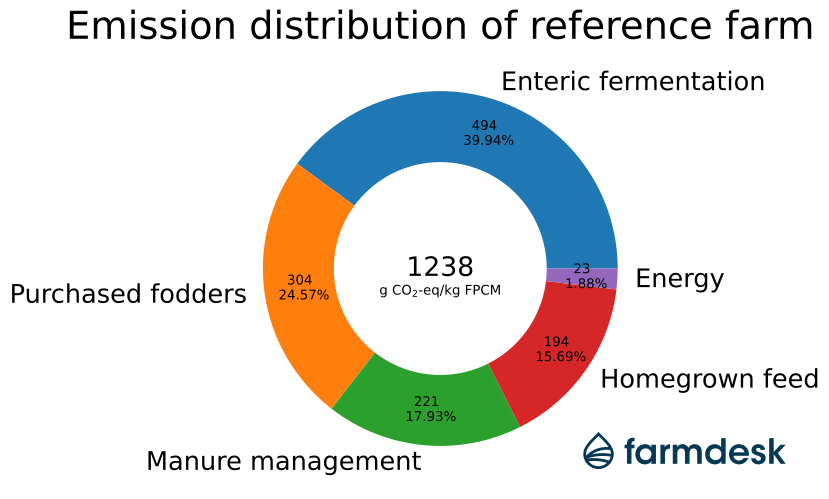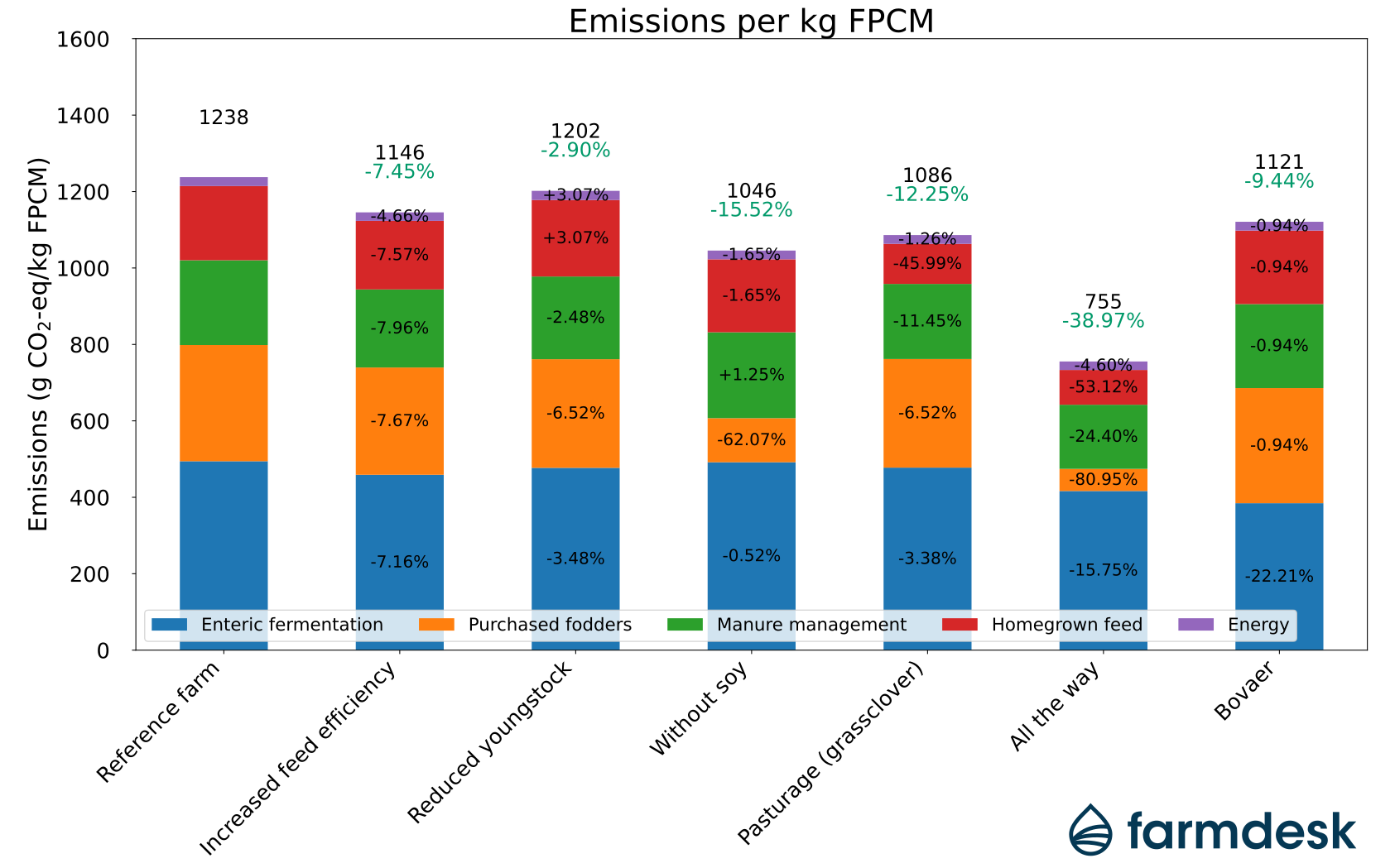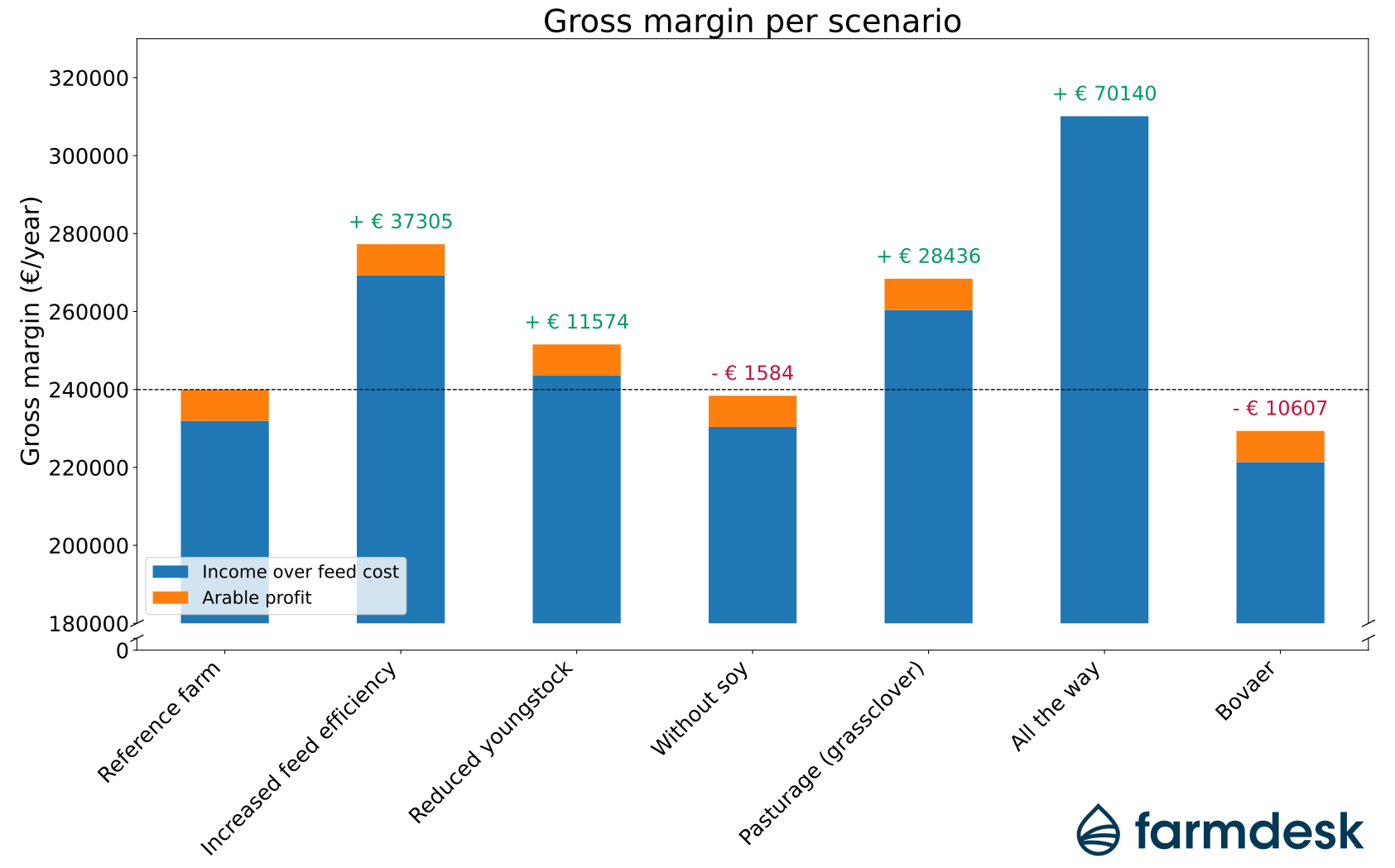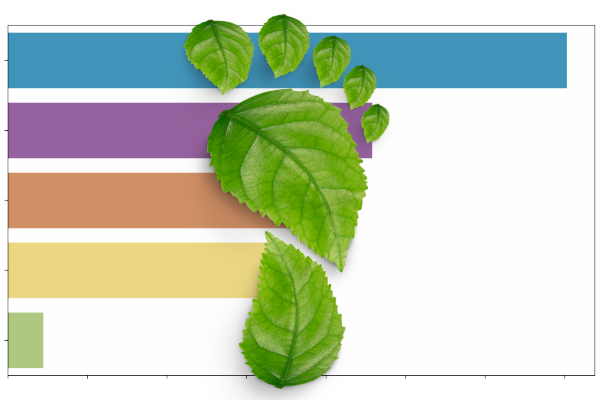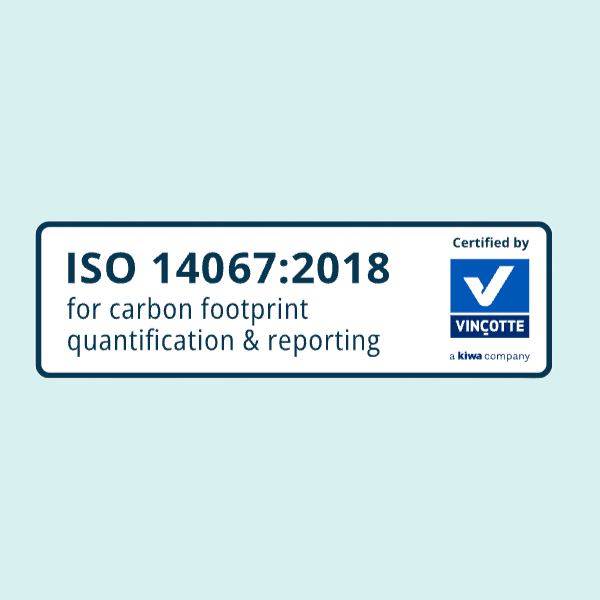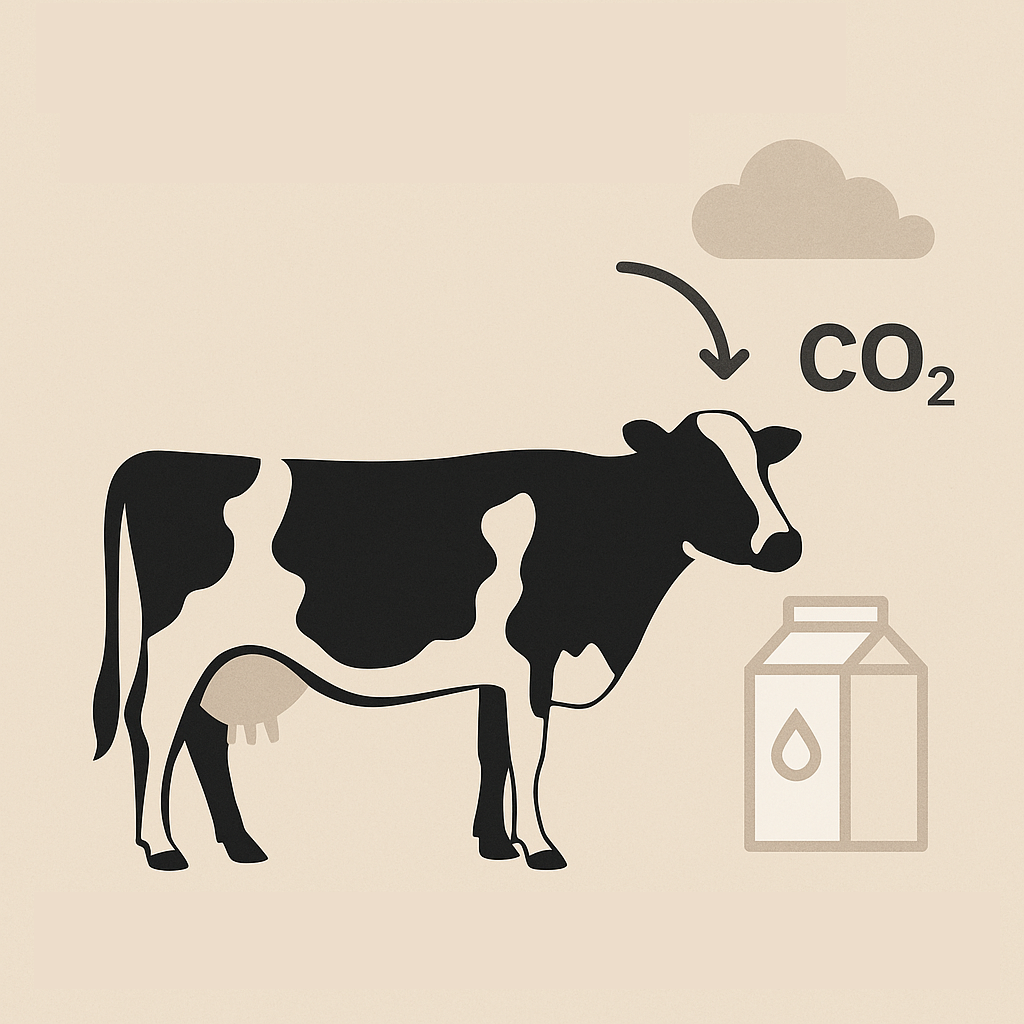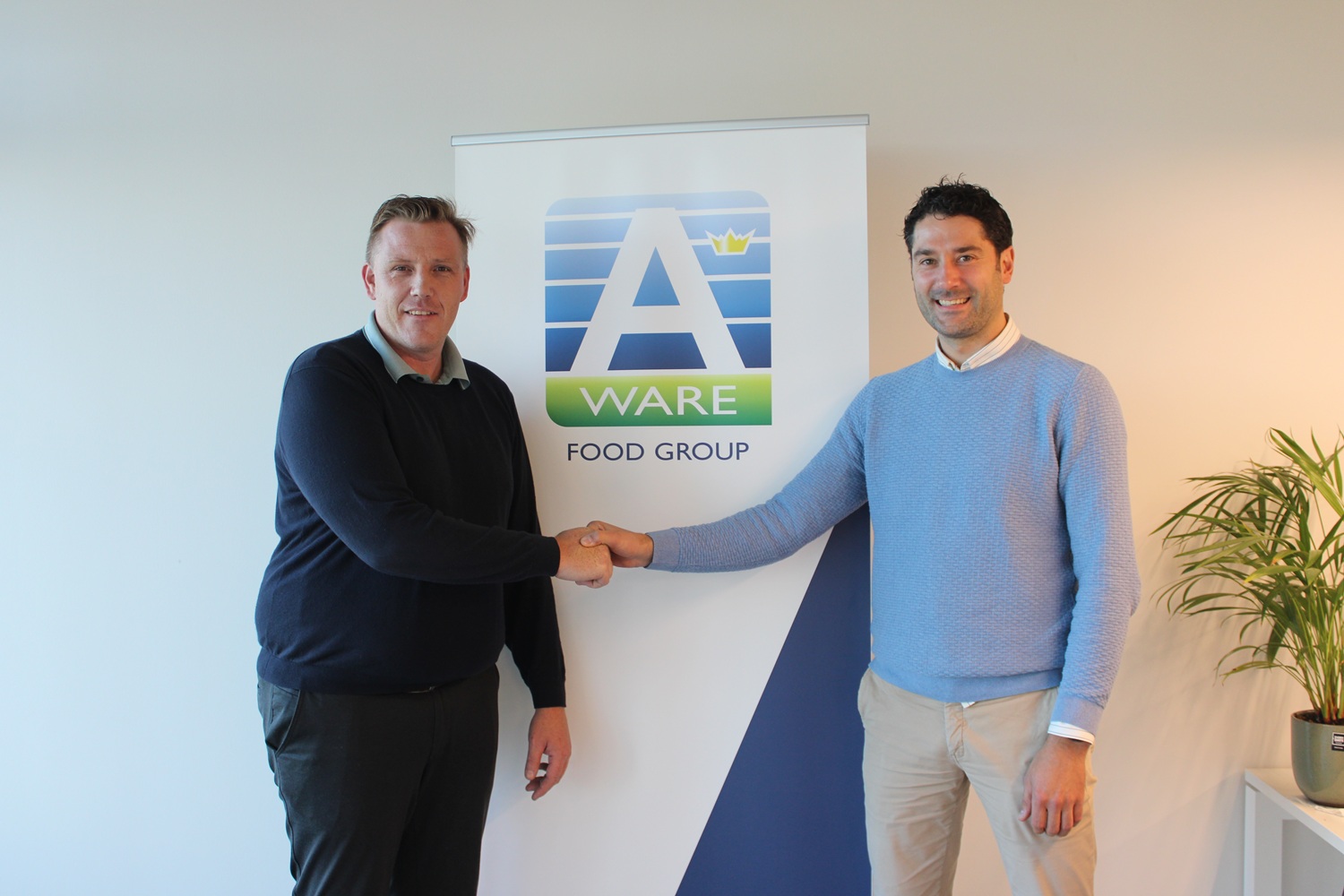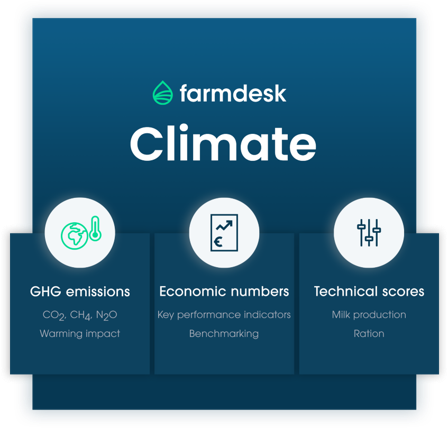Introduction
In a previous publication, the added value of Farmdesk Climate as a monitoring tool for carbon footprint on dairy farms was already discussed using a case study on Farmdesk's research farm.
In addition to carbon footprint monitoring, Farmdesk Climate also includes a Footprint Optimizer in which strategies for greenhouse gas reductions on dairy farms can be techno-economically calculated.
In this publication, we present the results of an initial impact study. The impact of several emission reduction strategies is discussed and weighed against the sectoral reduction target of 30% by 2030 [1].
This study was made for Flemish dairy farming. The findings can also be applied in regions with similar dairy farming, such as the Netherlands, for example.
Methods
The starting point is a typical Flemish dairy farm; further referred to as the “Reference Farm.” Based on available public figures of specialized dairy farming in Flanders, we assume for the Reference Farm an average milk production of 9,400 kg milk/cow/year [1] with 106 dairy cows [2]. In terms of manure management, we assume manure storage in slurry basements.
An average ration was assumed based on figures from our feed management tool Farmdesk Dairy, as shown in the first row - last column of Table 1. To start from a relatively simple initial situation, it was assumed that only the grass silage and the corn silage were homegrown. The corresponding cropping plan, also taking into account the feed requirements of young cattle and dry cattle, is 23 ha and 27 ha, respectively. In order to be able to further calculate the effect of more homegrown feed in this study, we foresee 8 ha of unused land in the Reference Farm, on which we apply an income of 1,000 €/ha (to make a correct economic comparison).
In addition to the Reference Farm, this study calculated the effect of six commonly known reduction strategies:
- Increased feed efficiency: where the Reference Farm has a feed efficiency of 1.36 (30.15 kg FPCM / 22.11 kg DM feed), in this case we assume that milk production increases to 10,000 kg/cow/year at the same feed intake. Thus, feed efficiency increases to 1.47 (32.62 kg FPCM per day / 22.11 kg DM).
- Reduced youngstock: where the Reference Farm has a replacement rate of 30% (representing 66 head of youngstock), in this case we assume a low but achievable replacement rate of 20% [4] (representing 44 head of youngstock).
- Without soy: where the Reference Farm ration contains 1.39 kg DM soybean meal (crude protein 49%) and 2.23 kg compound (containing 11% soy), in this case the ration was recalculated with rapeseed meal (crude protein 39%), protected rapeseed meal and a soy-free compound as alternatives.
- Pasture (grassclover): where in the Reference Farm no grazing and classic grassland is assumed, in this case grassclover is assumed of which 10 ha is grazed (150 days of grazing - 6h/day gives an annual average of 2.45 kg DM fresh grass per day) and 13 ha is ensiled. Also, on the grassclover only fertilization with slurry and no chemical fertilizer was assumed.
- All the way: in this scenario, all the above-mentioned cases are included as well as a cropping plan optimization is done on the fully available 58 ha to arrive at a maximal homegrown feeding strategy.
- Bovaer: this case is identical to the Reference Farm with only addition of the enteric methane inhibitor 3-NOP (Bovaer, [5]) in the ration of the lactating cows.
We are aware that there are other reduction strategies such as manure digestion, soil carbon sequestration, other feed and manure additives, methane-inhibiting feed combinations, maximization of by-products in the ration... These were not included in this study but may be addressed in follow-up studies.
The resulting greenhouse gas emissions were calculated using Farmdesk's Footprint optimizer where individual emissions of the greenhouse gases methane (CH4), nitrous oxide (N2O) and carbon dioxide (CO2) were determined separately. All results are expressed in grams of CO2-equivalents per kilogram of standard milk (g CO2-eq/kg FPCM). For the standards, allocation factors and GWP factors used, see this article.
Results & discussion
The total calculated emissions for the Reference Farm are 1238 g CO2-eq/kg FPCM. This is in line with Western European values from other research [6] but significantly higher than the result communicated in [7]. The ring diagram below breaks down total emissions into the five main sources: enteric fermentation, purchased feed, manure management, homegrown feed and energy.
The figure below shows the greenhouse gas emissions of the Reference Company and the six cases calculated. The main conclusions are:
- Increased feed efficiency: an increase in milk production at the same feed intake results in a relative decrease per kg of measured milk (FPCM) of all emission sources resulting in a total emission decrease of 7.45%.
- Reduced youngstock: aiming for a higher exit age of reformed cows lowers the replacement rate and consequently the number of youngstock required. Fewer youngstock reduces emissions from enteric fermentation, purchased feed and manure management. The cropping plan and energy consumption remain unchanged (compared to the Reference Farm), but since fewer cows are disposed of, the milk/meat allocation factor increases resulting in a relative increase in home grown feed and energy. Overall, there is an emission reduction of 2.90% when the replacement rate is reduced from 30% to 20%. The potential effect will obviously be greater on a farm with a higher replacement rate.
- Without soy: the average soybean meal on the Flemish feed market has an emission factor of 3335 g CO2-eq/kg [8], of which 2746 g (82%) is attributable to land use change. For rapeseed meal, the emission factor is 525 g CO2-eq/kg with a land use change share of 127 g (24%). Replacing soybean meal with (resistant) rapeseed meal gives a 62% decrease in emissions from purchased feed, resulting in a total emission reduction of 15.52%. For reference, soybean meal on the U.S. market has an emission factor of only 582 g CO2-eq/kg because no forest is cleared there for soybean cultivation. Consequently, there is much to be gained from the origin of soybean meal.
- Grazing (grassclover): when switching from grass to grassclover with grazing, there are two effects. First, omitting chemical fertilizer on grassland results in a decrease in emissions from homegrown feed of 46%. Second, grazing results in a decrease in emissions from manure management of 11% because less manure ends up in storage. The combined effect gives a total emission reduction of 12.25%. An important note is that the digestibility of grassclover has a significant effect on the result: if the grassclover has poor digestibility, part of the gain will be cancelled out by more emissions from manure management.
- All the way: the combined effect of all measures above as well as more homegrown feed gives a total emission reduction of 38.97%, with all emission sources decreasing significantly.
- Bovaer: daily addition of an enteric methane inhibitor with an effect of 30% to only the lactating group results in a net decrease of 9.44%.
The graph below shows the economic impact for the six cases in relation to the Reference Farm. The economic impact is expressed in gross margin per year and is defined as total milk sales (at a market-conform milk price) minus total feed costs for dairy cattle, dry cattle and young cattle (with market-conform feed and crop prices).
It is self-evident that higher feed efficiency and keeping fewer youngstock will increase gross margins. It is interesting to note that switching to grassclover (with grazing) and more homegrown feed can also lead to higher margins. Implementing these strategies successfully is not a given and must be accompanied by skilled crop and feed management.
Conclusion
The title of this publication is "Carbon footprint reduction on a Flemish dairy farm: is 30% possible?".
The answer is yes - where the road to it on a typical dairy farm will consist of a combination of several measures. It will also have a reasonable impact on farm management, but not necessarily with a negative economic impact.
“Achieving a 30% greenhouse gas reduction on an average Flemish dairy farm is possible and is not by definition economically disadvantageous, but will require the necessary efforts.”
Jef Aernouts
References
- [1] J. Marston. (2022). Tracking corporate climate goals for meat & dairy is more crucial than ever. agfundernews.com/trarcking-corporate-climate-goals-for-meat-and-dairy-is-more-crucial-than-ever
- [2] vilt.be/nl/nieuws/vlaamse-melkproductie-ver-boven-europees-gemiddelde-maar-potentieel-nog-hoger
- [3] landbouwcijfers.vlaanderen.be/landbouw/melkvee/aantal-bedrijven-melkvee
- [4] melkvee.nl/artikel/414384-grote-verschillen-in-vervangingspercentage-melkvee/
- [5] dsm.com/anh/products-and-services/products/methane-inhibitors/bovaer.html
- [6] Mazzetto, A. M., Falconer, S., & Ledgard, S. (2022). Mapping the carbon footprint of milk production from cattle: A systematic review. Journal of Dairy Science, 105(12), 9713–9725. doi.org/10.3168/jds.2022-22117
- [7] Riebbels, G., & Van linden, V. (2023). Meest klimaatvriendelijke melk komt uit… Vlaanderen. ILVO. ilvo.vlaanderen.be/nl/nieuws/meest-klimaatvriendelijke-melk-komt-uit-vlaanderen
- [8] blonksustainability.nl/tools-and-databases/agri-footprint
